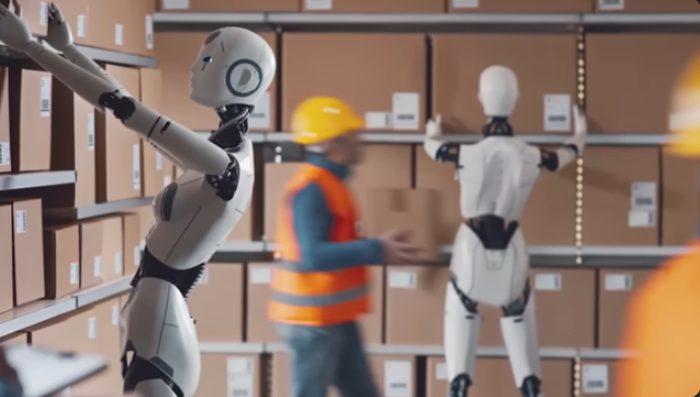Market researchers warn of race with China for ‘humanoid robot supremacy’

A new Morgan Stanley research report predicts the international market for human-like machines with arms, legs, hands and AI-powered brains could top $250 billion by 2035 — a market share that would nearly double the size of the auto industry.
From supply chains to repair, maintenance and support providers, there could be as many as over 1 billion robots in use by 2035, with the vast majority used for industrial and commercial tasks, according to the report.
Within a decade, approximately 930 million humanoids are expected to perform repetitive, structured work, primarily in factories and businesses. Researchers say general-purpose home humanoids, capable of diverse tasks, require significant advances in hardware and AI, likely taking another decade.
“The forecast for household usage is much more conservative, with only 80 million humanoids in homes by 2035,” said Adam Jonas, Morgan Stanley’s head of Global Autos and Shared Mobility Research. “We are not going to see a robot in every home overnight.”
Regulatory approval and societal acceptance, alongside price reductions, are also key steps to accelerating “humanoid volume and penetration” in homes and shared living spaces, the report stated.
Costs are another barrier: while humanoids go for roughly $200,000, prices are expected to drop to about $50,000 by 2035. Lower-income nations could even see costs fall to $15,000 by leveraging China’s more affordable supply chain, Jonas predicted. Many critical components, such as screws, motors and batteries are sourced from China and Asia, with few U.S. alternatives, according to the report.
By 2035, U.S. household penetration could reach 10%, which means about 15 million units could be used within American households earning $50,000 annually, to as many as 33% of households earning above $200,000, according to the report.
In China, despite leading in total units, only 3% of households — about 4 million — are expected to own a humanoid. “We recognize that, hypothetically, the average household could have more than one unit, creating a fleet of humanoid butlers,” Jonas said. “However, in our forecasts, we assume one humanoid per household at this time.”
Rapidly-changing economic realities could also tilt what Jonas called the “race for agentic humanoid robot supremacy” in China’s favor. “The U.S. will need to make significant changes in manufacturing capability, education and national policies to remain competitive in this area,” he added.
The age of consumer robots has been dawning for the better part of a decade, with the advent of robot priests, robot brothels, and even everyday household chores as over 100 manufacturers worldwide work toward delivering humanoid robots to the masses.
Corporations, however, are much closer to deploying a humanoid workforce.
Taiwan electronics manufacturer Foxconn and AI chipmaker Nvidia are reportedly in talks to use humanoid robots at a factory in Houston to build AI servers for Nvidia. The companies announced the move will mark the first time an Nvidia product was built with the help of humanoid robots, as well as the first time humanoids would be used on Foxconn AI factory production line, according to Reuters.
















